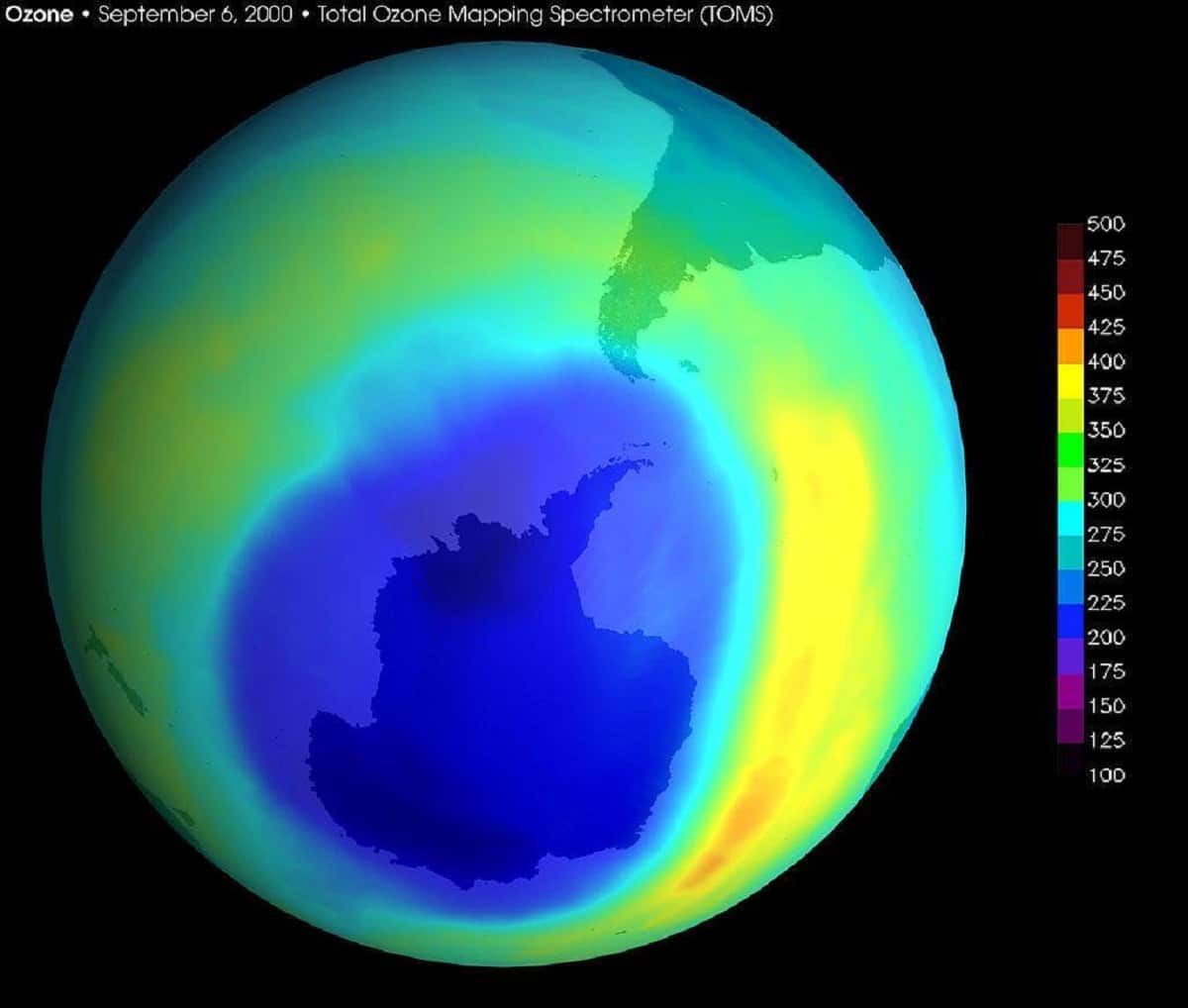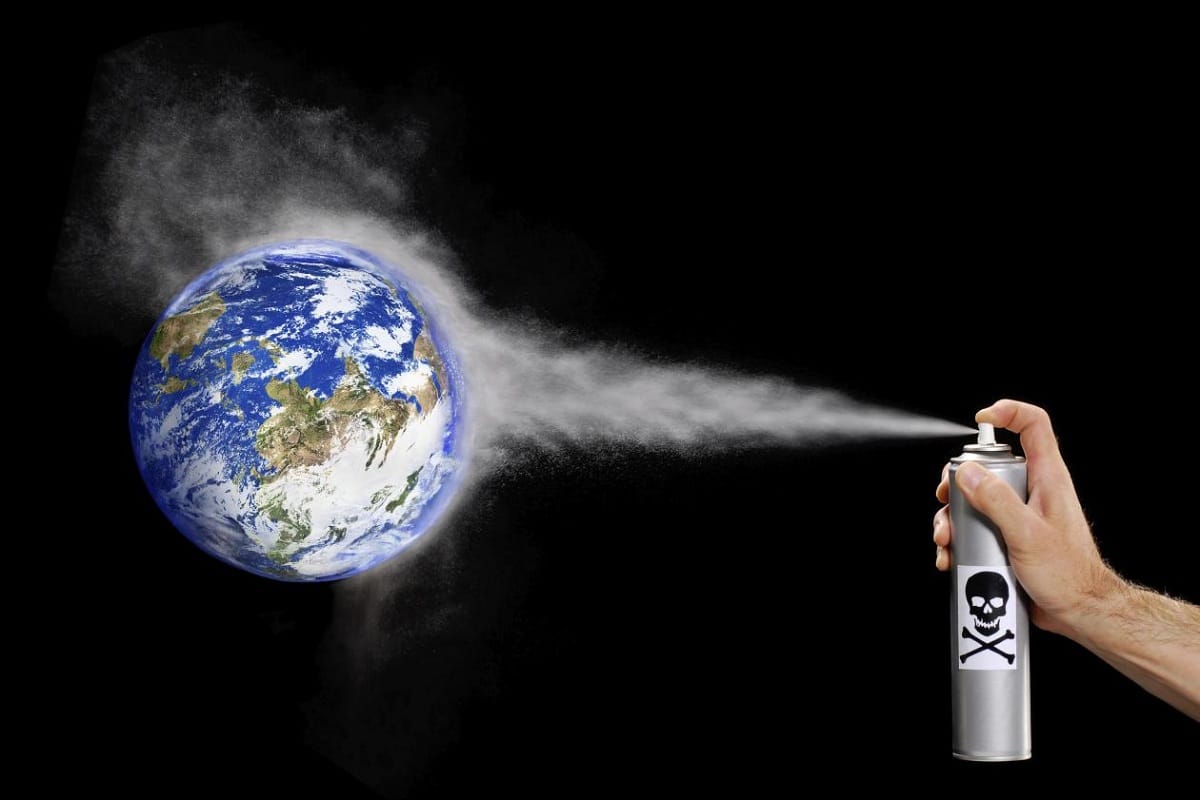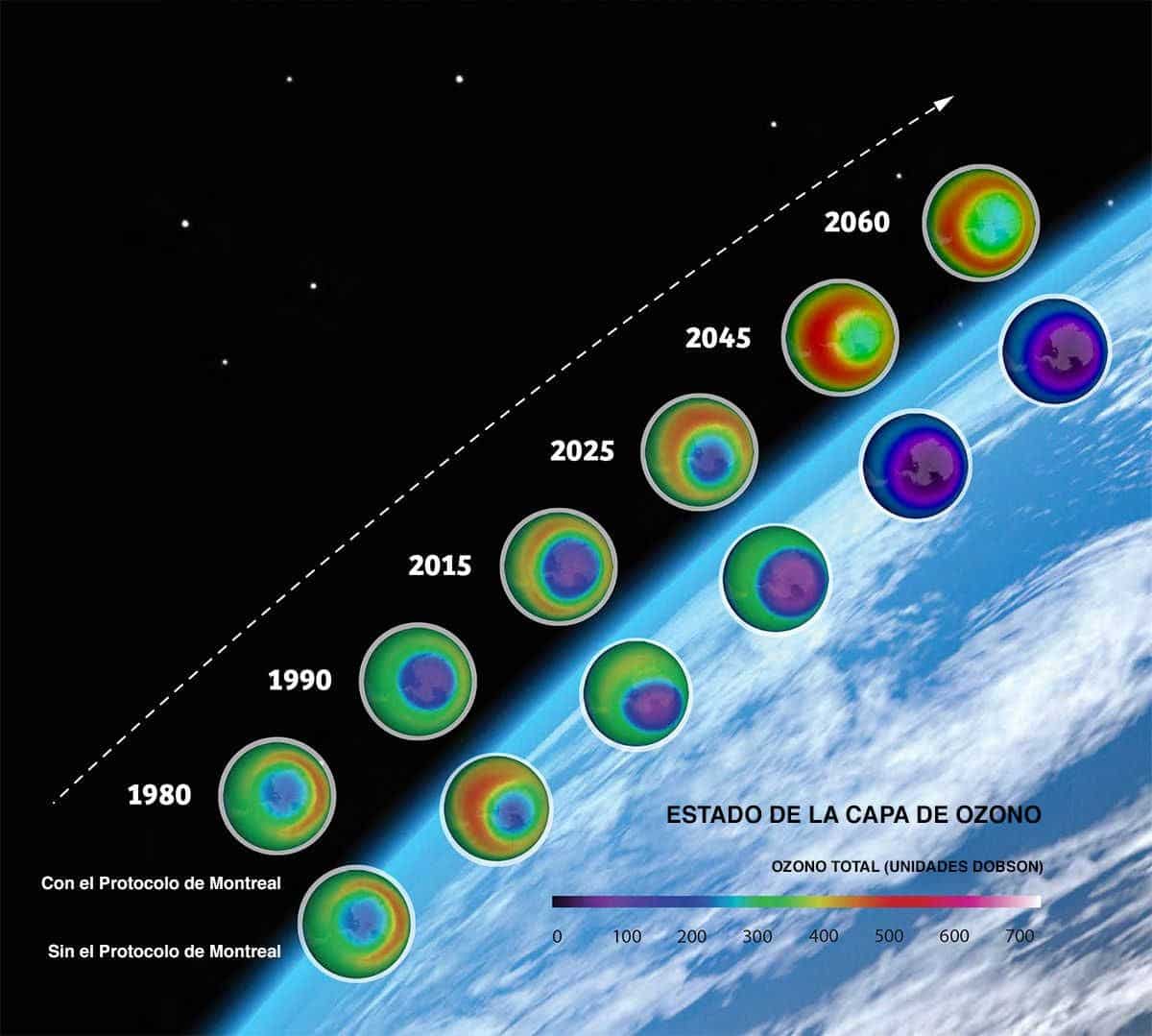
Surely when you hear about the hole in the ozone layer that the gases responsible for it count. The main chemical substance that has caused the decrease in the concentration of atmospheric ozone are the chlorofluorocarbons. These are gaseous chemicals that were used since their inception in 1928. They are also known by the acronym CFC. They were investigated in detail and showed that their properties endangered not only public health but also the ozone layer. Therefore, its use was prohibited.
In this article we are going to tell you what chlorofluorocarbons are, what their characteristics are and why they destroy the ozone layer.
What are chlorofluorocarbons

These are chemicals that are made up of carbon, fluorine, and chlorine atoms. Hence its name. These atoms belong to the group of halocarbons that are the group of gases are not toxic or flammable. They were originated for the first time in 1928 as an alternative to various chemical substances that were used in refrigerators. They were later used as propellants in insecticides, paints, hair conditioners, and other health care products.
Between the 50s and 60s they were used in air conditioners for homes, cars and offices. All of these uses caused chlorofluorocarbons to expand globally. At that time the use of these chemicals increased by about a million metric tons that were produced annually from just in the United States. Later it increased its use even more. It reached such an extent that it was used as aerosol, refrigerant is, blowing agent for foams, packaging material and in solvents.
Most common chlorofluorocarbon products

These chemicals do not have a natural source from which they come. They are chemicals created by humans for many uses. They were used as refrigerants, propellants and industrial solvents for the manufacture of foams. It also served as a cleaning agent in the manufacture of electronic products. Its use was such the impact on the ozone layer increased enormously in a short time. These gases were known to destroy stratospheric ozone to such a degree that harmful solar ultraviolet radiation could reach the surface.
Among the most popular chlorofluorocarbon products we have the following:
- Refrigerant is in air conditioners.
- Refrigerators.
- Propellants in aerosols.
- Inhalers to control asthma. Later this was banned to reduce the impact on the stratosphere.
- Haloalkanes in aircraft.
- Solvents want grease sooner.
Negative effects of chlorofluorocarbons in the atmosphere
As mentioned before, these chemicals were known to damage the ozone layer. This means that much of the ultraviolet radiation from the sun can pass through the stratosphere and reach the earth's surface. It was seen to have numerous negative effects on our own health. And it is that, when dealing with various compounds that are chemically inert, it was thought that they would be harmless in the atmosphere. However, with the passage of time it was found that reacted with ultraviolet radiation in the atmosphere, specifically in the stratosphere.
In this layer of the atmosphere there is a large concentration of ozone that helps us reduce the ultraviolet radiation that comes from the sun. This large concentration of ozone is known as the ozone layer. When chlorofluorocarbons interact with radiation, they undergo photolytic decomposition that turns us into sources of inorganic chlorine. When chlorine is released in the form of atoms they are capable of catalyzing the conversion of ozone molecules into oxygen. This means that it accelerates the naturally occurring chemical reaction of converting ozone to oxygen.
We remember that an ozone molecule is made up of 3 oxygen atoms. Atmospheric oxygen is made up of two oxygen atoms. In this way, chlorine acts as a catalyst to increase the rate and amount of chemical reactions that convert ozone into oxygen. Thus up to 100.000 ozone molecules can be destroyed for each chlorine atom that is released. All these reasons are why chlorofluorocarbons are related to the destruction of the ozone layer.
It is not that these chemicals directly destroy the ozone found in the stratosphere, but rather that various chemical reactions are required for them to occur. However, the rate at which chlorofluorocarbons will be emitted into the atmosphere caused a large amount of stratospheric ozone to be disappearing. The disappearance of the ozone layer has very damaging consequences and further increases chemical pollution. And it is that ozone is in charge of absorb much of the sun's ultraviolet radiation that is between wavelengths of 280 and 320 nm and that it is harmful to both animal and plant organisms and the human being, of course.
Ozone hole

The use of these chemicals in great proportion has resulted in the creation of holes in the ozone layer. It is not that there is a hole itself in which there is no concentration of ozone. They are simply areas where the ozone concentration is far below normal. This concentration is low enough to not allow ultraviolet radiation to remain in the area and penetrate the earth's surface.
Although chlorofluorocarbons are prohibited, because they have great chemical inertness and are insoluble, even today, a large part of the chemicals emitted during previous years are still found. This is because they have a long life expectancy in the atmosphere. Since 1987 the Montreal protocol recognized these chemical compounds as harmful and other international agreements were joined that caused or the prohibition of these chemicals, since they also act as greenhouse gases.
As you can see, chlorofluorocarbons have great negative effects both in the atmosphere, as well as in animals, plants and in humans. I hope that with this information you can learn more about chlorofluorocarbons.